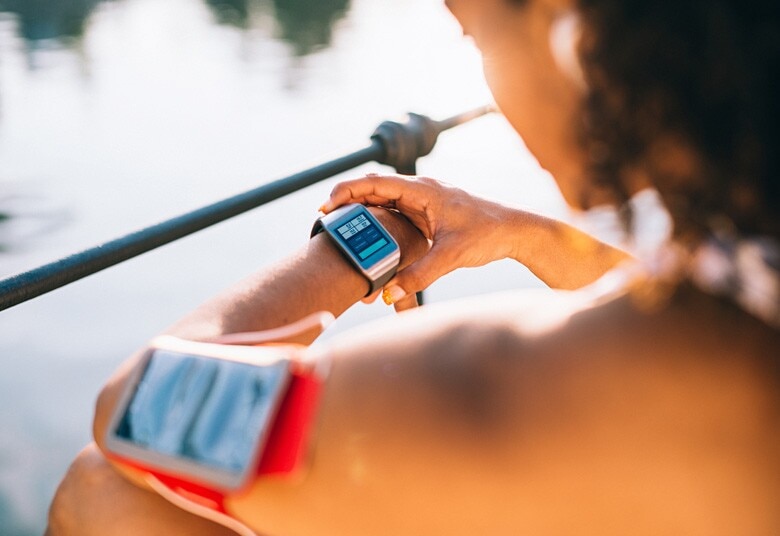
Meeting U.S. Regulations on Patient Data Sharing
Regulations issued by the US Centers for Medicare & Medicaid Services (CMS) and Office of the National Coordinator for Health Information Technology will drive greater sharing of patient healthcare data among CMS-regulated health plans. According to the regulations, by January 1, 2021, health plans must allow their members to access their healthcare data in claims systems, EHRs, and other sources via applications using the secure FHIR Release 4 (R4) API. InterSystems IRIS for Health and HealthShare fully support this standard.
Easily Connect Mobile Devices to Health Records

On-demand access to personal health information using mobile phones, tablets and other devices is now possible through FHIR-based application programming interfaces (APIs). For example, when the healthcare facility is registered with Apple, data from InterSystems TrakCare unified healthcare information system can be viewed in iPhone’s Apple Health app alongside information collected from other healthcare organisations. Information from TrakCare includes conditions, allergies, medications, and lab results.
InterSystems products use the API and Core Data Services specified by the HL7 FHIR Argonaut project for secure sharing of patient based clinical records with conformant health information systems and other applications.
Value-based Care Initiatives & FHIR
Health plans (a.k.a. “payers”) and provider organizations benefit when implementing FHIR to improve collaboration and care coordination.

The
HL7 Da Vinci Project is a multi-organisation initiative focused on improving data sharing in value-based care arrangements by leveraging HL7 FHIR. The project is currently working on use cases in 5 categories:
- Quality Improvement
- Coverage/Burden Reduction
- Member Access
- Process Improvement
- Clinical Data Exchange
Member Access
In the Member Access category, InterSystems HealthShare Provider Directory software supports the Da Vinci Payer Data Exchange (PDeX) use case. PDeX leverages FHIR for health plans, enabling compliance with the final CMS Interoperability Rule that requires sharing of provider directory content via FHIR R4 APIs.
Quality Improvement
For the Quality Improvement category, view this AHIP webinar to learn what it takes to implement the Da Vinci Data Exchange for Quality Measures (DEQM) use case. You’ll see how FHIR enables sharing of data for health plan performance measurement, while reducing the burden of compliance on providers.
Optimise Data Transfer for Care Providers
FHIR-based interoperability can help care provider organisations streamline and automate processes, freeing up valuable resources to focus on patient care. Examples include:
- Updating key patient-specific medical information in real-time
- Event notifications
- Transitions of care
- Medication management
Updates in Real-Time
In the UK, thanks to NHS Digital and FHIR APIs, key patient data can be brought into a hospital's EMR on-demand from external sources. In a medical emergency or prior to surgery, for example, clinicians can query a general practitioner's medical record system for information such as medications and allergies, and instantly populate the correct fields in the hospital's system.
Event Notifications
Also in the UK, FHIR messaging and InterSystems technology is driving clinical event notifications across a network of healthcare information systems. Users, including parents, can subscribe to an event management system and receive notifications on a per patient basis. The event management system receives FHIR messages, stores them, and updates each subscriber based on filtering preferences. Examples of event types include vaccinations, pediatric developmental milestones, or routine screening exams.
Transitions of Care
FHIR-based messaging enables smooth transitions of care through the exchange of information between providers and across care facilities and organisations. When discharging patients from the hospital, Emergency Department, out-patient appointments, or elective surgery, this timely information-sharing helps enable uninterrupted patient care.
Due to the ease and speed with which FHIR applications are created, and the availability of FHIR as a public API (Application Programming Interface), the potential of FHIR for clinical care is extraordinary. This video reviews the basics of FHIR and the aspects that give the FHIR standard its potential for clinical care.
Medication Management
In contrast to the traditional concept of medication lists, FHIR introduces a new architecture for medication management. One limitation of current medication lists is that whether it is the list of medications that a physician has prescribed, the list of medications that the pharmacy has dispensed, or the list of medications that a patient says they currently take, they all look the same.
The medication module in FHIR includes 9 different FHIR Resources – self-describing units of structured data and references to other resources or data sources. They allow for a much more meaningful and useful exchange of medication information between different systems. Adoption of the FHIR standard has the potential to address patient safety risks from medication errors – the most common category of medical mistakes.

























